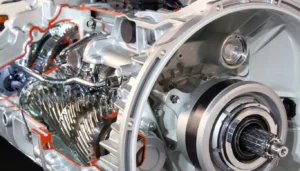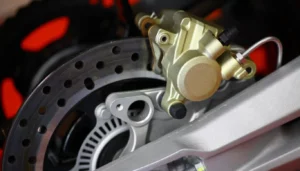Ever heard the term ‘valve clearance’? Unless you’re an avid car aficionado, it’s unlikely. Nevertheless, if your vehicle is showing signs like increased engine temperature, declining fuel economy, power loss, or unusual sounds, these could potentially be symptoms of an issue known as tight valve clearance.
This unnoticed yet critical aspect of your vehicle’s engine may deeply influence its performance and efficiency. In this article, we unravel the symptoms, importance, and the basics of valve clearance, along with some common causes of this condition. Knowledge of these fundamentals will empower you to better understand your vehicle and its needs.
Symptoms of Tight Valve Clearance
If you’re a car owner or a mechanic, it’s critical to understand the signs of tight valve clearance to prevent potential engine damage. These symptoms include:
Your vehicle’s performance can be greatly affected by tight valve clearance, and identifying these symptoms early could save you from any unnecessary hassles and costly repairs. Pay close attention if you notice the following issues:
1. Elevated Engine Temperature
Have you noticed your vehicle running hotter than usual? This could be a tale-tell sign of tight valve clearance. Here’s why this happens and what it means for your vehicle.
Why Tight Valve Clearance Raises Engine Temperature
When the valve clearance is too tight, the valve doesn’t close completely. This disrupts the engine cooling process, which ordinarily ensures that excess heat dissipates appropriately. As a result, the engine temperature significantly elevates, leading to overheating if left unchecked.
Impact on Engine Performance
This rise in engine temperature isn’t merely uncomfortable; it endangers your engine’s overall performance. Excessive heat can warp engine parts, degrade oil faster, and even lead to catastrophic engine failure if severe enough. Conversely, maintaining proper valve clearance can ensure optimal engine temperature and protect the overall health of your vehicle.
Identifying Elevated Engine Temperature
Identifying an elevated engine temperature requires constant vigilance. Be observant of your temperature gauge reading higher than normal or the check engine light illuminating. If these signs appear in conjunction with other symptoms such as unusual engine noises or poor fuel efficiency, you might be dealing with a case of tight valve clearance.
Solution and Prevention
Addressing the issue promptly is crucial. It typically involves adjusting valve clearance which should ideally be done by a professional. Regular engine check-up and timely maintenance, especially for high-mileage vehicles, can help prevent tight valve clearance and thereby ensure maintaining the correct engine temperature.
2. Poor Fuel Efficiency
When your vehicle’s valve clearance is too tight, another symptom to watch for is poor fuel efficiency. This issue can creep up without major, noticeable signs, so it’s essential to keep a close eye on your fuel consumption.
Understanding Fuel Efficiency and Tight Valve Clearance
Valve clearance plays a major role in ensuring optimal fuel-air mixture in the combustion chamber, which is crucial for your vehicle’s overall fuel efficiency. The valve clearance must be just right — not too loose and not too tight — to prevent fuel wastage.
How Tight Valve Clearance Affect Fuel Efficiency
When the valve clearance is tight, the valves may not close completely. This can cause an imbalanced air/fuel mixture, which makes your engine work harder to compensate, resulting in increased fuel consumption. The engine can overcompensate for the lack of air by burning more fuel, leading to a drop in fuel efficiency.
Identifying Decreased Fuel Efficiency
A sudden noticeable increase in your vehicle’s fuel consumption could be a sign of too tight valve clearance. It’s essential to regularly monitor your mileage and fuel levels. A sudden decrease in gas mileage or if you’re visiting the gas station more often can signal a valve clearance issue.
Maintaining Fuel Efficiency: Solution & Prevention
Typically, adjusting your valve clearance can improve your vehicle’s fuel efficiency. However, a qualified mechanic should perform this process because it requires technical knowledge. Regular maintenance and service checks can significantly minimize the risk of insufficient valve clearance and help maintain your vehicle’s fuel efficiency.
3. Power Loss
One of the key indicators that your vehicle could be dealing with tight valve clearance is a noticeable power loss. The engine might seem sluggish and lack the usual punch when you step on the accelerator.
Interpreting Power Loss as a Result of Tight Valve Clearance
When the valve clearance is too tight, it can prevent the valve from fully closing in the combustion chamber. This can result in a loss of compression, which means your engine will not be generating power as efficiently as it should be.
The Consequences of Power Loss on Driving Experience
Experiencing power loss due to tight valve clearance could drastically impact your driving experience. You might find it lacks the throttle response you are used to, and might not be able to get up to speed as quickly or efficiently. This can make driving less smooth and enjoyable, especially if you’re driving a performance-oriented vehicle.
Detecting Power Loss
Identifying power loss can sometimes be tricky, as it can happen gradually over time, making it less noticeable. However, significant or sudden changes like slower acceleration, difficulty maintaining highway speeds, or more effort required to keep the same pace, could be strong indicators of this problem.
Solution & Prevention: Maintaining Optimum Power Output
To rectify this issue, it is advisable to regularly inspect and adjust the engine’s valve clearance as per the manufacturer’s guidelines. Performing periodic maintenance can help in early problem detection, leading to minimal performance loss and maximizing the vehicle’s lifespan.
4. Hard Starts
If you’re finding it increasingly difficult to start your vehicle, this could signal an issue with tight valve clearance. The valves in your engine play a crucial role in the start-up process; when their clearance is too tight, they can hinder your engine from running normally. This predicament often results in what we refer to as ‘hard starts’, making your daily drive a bit more challenging.
The Connection Between Hard Starts and Tight Valve Clearance
When the valve clearance is too tight, the valves are unable to close fully. This can lead to insufficient compression during the start-up phase, making it hard for your engine to start. Remember, seamless operation of the valves is key in keeping your drives smooth and trouble-free.
Identifying Hard Starts
Long cranking times before the engine starts, stalling, and sporadic starting then immediate stalling are signs of hard starts. A significant delay between the ignition and engine’s response is a typical sign of a hard start. You’ll find you’re turning your key, or pressing the start button more times than usual.
Tackling Hard Starts: Solution & Prevention
Should you notice persistent hard starts, consider inspecting your valve clearance. Adjustment of the valve clearance can often solve hard start issues. Regular checks and maintenance of your engine components, particularly the valves, are highly recommended. This proactive approach can help prevent the undue stress of unwelcome hard starts.
5. Unstable Idle
When your vehicle’s engine has an unstable idle, it’s hard to ignore. This shake or “stutter” is not only distracting, but it also often signals an issue such as tight valve clearance. Experiencing this while your vehicle is stationary, especially in neutral or park, can not only make it difficult to use your vehicle, but also pose a risk to its long-term functionality.
The Link Between Unstable Idle and Tight Valve Clearance
So, how exactly does tight valve clearance lead to an unstable idle? The answer lies in the critical function of valve clearance in the overall operation of the engine. When the valve clearance is too tight, it can prevent the valve from fully closing after letting the air-fuel mixture into the cylinder. This incomplete closing disrupts the combustion process – causing the unstable idle you experience.
Identifying Unstable Idle
Identifying an unstable idle is relatively straightforward. You’ll notice this issue when your vehicle’s engine vibrates excessively or inconsistently while idling. Instead of a smooth and even rhythm, you’ll be faced with an erratic or jumpy feel. Although many other factors may also cause unstable idle, this could certainly be due to tight valve clearance when coupled with other symptoms like elevated engine temperature or poor fuel efficiency.
Addressing Unstable Idle: Solution & Prevention
Addressing an unstable idle caused by tight valve clearance usually involves you taking your vehicle to a professional mechanic. They can evaluate the valve clearance and adjust it as necessary. Sustaining optimal valve clearance is crucial and can be maintained with regular engine check-ups. By preventing valve clearance issues from arising in the beginning, you can protect your engine from damage – and keep your ride smooth and stable.
6. Unusual Engine Noises
Engine noise: something no car owner enjoys. These noises are often a sign of underlying issues your vehicle might be experiencing, and one potential cause could be tight valve clearance. When your engine’s valves don’t have adequate space to operate correctly, it can generate a range of unusual and alarming sounds. Now, let’s delve a bit deeper to help you better understand this symptom and ways to resolve it.
Decoding the Noise: The Connection Between Unusual Engine Sounds and Tight Valve Clearance
Under ideal conditions, your engine operates silently. When you have tight valve clearance, however, the valves may hit harder or not close completely, leading to unique sounds. These can range from ticking sounds, like a constant clock, to loud clattering noises. If you hear these, your engine is literally crying for help.
Pinpointing the Issue: Identifying Unusual Engine Noises
Keep your ears tuned to the sounds your car makes. Listen carefully for noises that seem inconsistent or out of the ordinary, especially during ignition, acceleration, or when idling. It’s essential to identify these unusual sounds early on, as prolonged tight valve clearance can lead to engine damage.
Rectifying and Preventing: Hope is not lost
Thankfully, these issues can often be corrected with an engine tune-up or valve adjustment. Prevention, though, is your best weapon against tight valve clearance. Regular vehicle maintenance and inspections can help ensure your valve clearances are always within the prescribed range, keeping your engine quiet and happy.
Importance of Valve Clearance in Engine Performance
Understanding the necessity of valve clearance in engine performance is like grasping the importance of breathing for your body; overlooked, but crucial. Valve clearance, defined as the distance between the rocker arms and the valve stem in your engine, is a key factor in your vehicle’s overall performance and fuel efficiency. You’re likely to experience a variety of problems if it’s too tight, with some obvious symptoms highlighting them.
The Balance of Performance and Efficiency
Consider valve clearance as a conductor orchestrating the symphony of your engine’s performance. Setting the correct valve clearance can mean the difference between a smooth, harmonious ride and a cacophony of mechanical issues. Like a maestro’s perfect baton movement, the valve clearance must be just right—not too loose, not too tight.
The Consequences of Neglect
Ignoring the symptoms of tight valve clearance could lead to significant engine damage – a costly error. Metal parts can overheat and warp, disrupting your car’s normal function. When the space for engine cooling is minimized, elevated engine temperatures can occur, leading to inevitable burnout or severe, irreparable damage.
Managing Fuel Efficiency
One of the primary indicators of tight valve clearance is poor fuel efficiency. If your car seems to be guzzling gas at an alarming rate, it’s an alert to assess your valve clearance. Tight clearance can cause your engine to work harder, consuming extra fuel to compensate for the restricted space and decreased lubrication.
The Power Game
A noticeable loss of power and acceleration can be an immediate giveaway of a tight valve clearance issue. Your engine might find it difficult to pick up speed, especially under increased loads. If your vehicle’s ‘get up and go’ seems to have ‘gotten up and left’, it’s time to check the valve clearance.
Understanding Unusual Noises
Unusual noises from your engine can be puzzling, but they are often your car’s cry for help. A ticking sound is not ‘the norm’. It often reveals a tight valve clearance. Learning to identify and respond to these sounds promptly helps ensure your car’s health and longevity.
The Basics: What is Valve Clearance?
Maintaining the precise gap between your engine’s camshaft and intake and exhaust valves is an essential factor in optimal engine operation. Neglecting this arrangement may result in the symptoms of tight valve clearance, leading to noticeable changes in the performance of your vehicle’s engine.
How Does Valve Clearance Work?
The valve clearance or ‘lash’ is the thin gap between the rocker arms and valve stem tops that need to be precise for smooth operation. As the engine works, the camshaft rotates, opening and closing the intake and exhaust valves with the changing valve clearance. This rhythmical opening and closing ensure the fuel-air mixture moves into the engine during the intake stroke and the residual gases are expelled during the exhaust stroke.
Why is the Perfect Valve Clearance Crucial?
Perfect valve clearance is all about balance and timing. Too much clearance and the valves will open too late and close too early. This tardiness means it’s challenging to expel all of the exhaust gases or draw enough of the fuel-air mixture into the cylinder, leading to a loss of power. On the other hand, if the clearance is too tight, the valves may not completely close. This lack of complete closure can result in elevated engine temperatures, potential damage to the valves, and a decrease in fuel efficiency.
How to Maintain the Right Valve Clearance?
Maintenance of valve clearance requires periodic checking and, when necessary, adjustment. Your vehicle manufacturer usually gives a specification for the correct valve clearance in your engine – it’s crucial to stick to these guidelines. Tools like a feeler gauge are commonly used to measure valve clearance. When it seems too tight or too loose, a skilled mechanic should adjust it to the manufacturer’s specifications.
The Impact of Tight Valve Clearance on Engine Efficiency
Understanding the impact of tight valve clearance on engine efficiency is a critical aspect of vehicle maintenance. As well as affecting the functioning of your engine, a tight valve clearance can lead to a series of symptoms that may compromise your car’s performance and efficiency. Let’s take a deeper dive into how tight valve clearance affects engine efficiency.
What Does Tight Valve Clearance Do to Your Engine?
Tight valve clearance can pose a significant issue for your engine’s overall functionality. When valves are too tight, they can cause cylinders not to fill properly. As a result, the air-fuel mixture that drives vehicle power may be off-balance, leading to improper combustion and thereby impacting engine efficiency negatively.
How Does It Impact Engine Temperatures?
Increased engine heat is another notable symptom of tight valve clearance. A tight valve prevents proper air circulation, which is crucial for regulating engine temperature. This could lead to overheating and severe engine damage in the long run if not addressed promptly.
Implications on Fuel Efficiency
Another direct consequence of tight valve clearance is subsequent fuel inefficiency. When the air-fuel mixture doesn’t combust properly, your vehicle uses more fuel to compensate for the power loss. This means you’ll find yourself at the fuel station more often than necessary.
Does It Affect Engine Power?
Absolutely. Tight valve clearance can disrupt normal engine operation, ultimately leading to power loss. The incorrect air-fuel mixture coupled with inefficient combustion means your vehicle can’t achieve optimum power. As such, it might not accelerate as quickly or smoothly as it should.
Taking Action: Diagnosing and Rectifying Tight Valve Clearance
Recognizing the symptoms of tight valve clearance is only half the battle. A careful diagnostic process and expert adjustment or repair are necessary to ensure optimal engine performance. If you notice your vehicle showing symptoms related to tight valve clearance, such as increased engine temperature, poor fuel efficiency, power loss, or unusual noises, contact a trusted auto mechanic immediately.
DIY Valve Clearance Inspection: Step-by-Step Guide
Understanding the correct valve clearance of your vehicle’s engine is crucial for its optimal operation. Often, tight valve clearance can be the root cause for numerous engine ailments. That said, you can often diagnose such issues yourself with some basic understanding of your engine’s working. Let’s delve into how you can conduct a DIY Valve Clearance Inspection with this step by step guide.
Determine the Valve Clearance Specifications
First, it’s important to understand what you’re working with. The valve clearance specification for your engine can typically be found in your vehicle’s service manual. Make sure you’re familiar with these values as they will be critical for the inspection.
Allow the Engine to Cool
Before starting your inspection, ensure your engine has time to cool. Opening an engine while it’s hot can lead to scalds or burns. Patience is key, allow your vehicle ample time to cool.
Locate and Access the Valves
Now, to start the hands-on part, you’ll have to first identify where the valves are located. Depending on the model of your car, this can be easy or somewhat tricky. Use your vehicle’s manual for guidance. Once located, remove the necessary parts to get access to the valves.
Measure the Valve Clearances
Now that you’ve reached the valves, it’s time to measure their clearances. Use a feeler gauge for this purpose. You’ll want to note the clearance for each valve and compare them to the acceptable range for your vehicle.
Adjust the Valve Clearances
If you’ve found any valves out of spec, the next step is to adjust their clearances. This usually involves loosening the valve adjuster, inserting a feeler gauge of the correct size, and then tightening it back up. Make sure you check the clearance after tightening.
Reassemble and Test
The final step is, of course, putting everything back together and starting up the engine. Listen for any signs of trouble and confirm if your vehicle is running smoother.
Remember that working with vehicle engines requires caution and care. If you’re feeling unsure or overwhelmed then it may be best to enlist the help of a professional mechanic. But with a steady hand and some patience, you should be able to diagnose and fix most valve clearance issues.
Conclusion
Tight valve clearance has a profound impact on your engine’s health, influencing temperature, fuel efficiency, power, starting, idling, and noise levels. Regular monitoring can help keep your engine humming smoothly while warding off potential expensive repairs.
Armed with knowledge and a proactive stance, you can optimize performance, efficiency, and longevity through correct valve clearance. Remember, your engine is as strong as its weakest link. Hence, maintaining optimal valve clearance plays an essential role in your engine’s wellbeing.






